Every dilapidated structure conveys a narrative of its bygone era and establishes a tangible link to the contemporary age. Serving as a poignant illustration of India’s opulent historical and architectural heritage, the Bateshwar temple complex is a testament to the enduring nature of ruins. Comprising approximately 200 temples in a state of disrepair, this complex has undergone a revival in the present era.
Nestled within the gorge of the Chambal River, formerly notorious as the Land of Dacoits, the site encapsulates a captivating voyage through time. It offers a profound insight into the artistic and cultural expertise of the individuals who meticulously crafted these edifices with unwavering attention to detail and profound dedication. I invite you to accompany me on a virtual exploration of these archaeological marvels, each serving as a custodian of the quintessence of a once-thriving civilization from bygone centuries.

Glimpse Into The History Of Bateshwar Temple Complex:
The Bateshwar group of temples is dedicated to our 3 major Hindu Deities, “Shiva, Vishnu, and Shakti”.Dating back to the 8th to 10th century, holds a rich historical legacy attributed to the Gujjar-Pratihara dynasty. This dynasty, which wielded substantial influence over a vast expanse of Northern India from the mid-8th century to the 11th century, played a pivotal role in shaping the region’s cultural and architectural landscape. The Pratiharas, identifying themselves as Suryavanshis, claimed descent from Laxman, a prominent figure in the epic Ramayana.
During their rule, the Gujjar-Pratihara dynasty fostered a flourishing cultural milieu, marked by significant developments in art and architecture. The Bateshwar temple complex stands as a testament to this era, with its construction and subsequent transformation reflecting the socio-cultural and political dynamics of that time.
The architectural splendor of the Bateshwar temples showcases the meticulous craftsmanship of the people from the Gujjar-Pratihara dynasty. The temples, numbering around 200, not only served as places of worship but also bore witness to the cultural and religious ethos prevalent during that historical period.
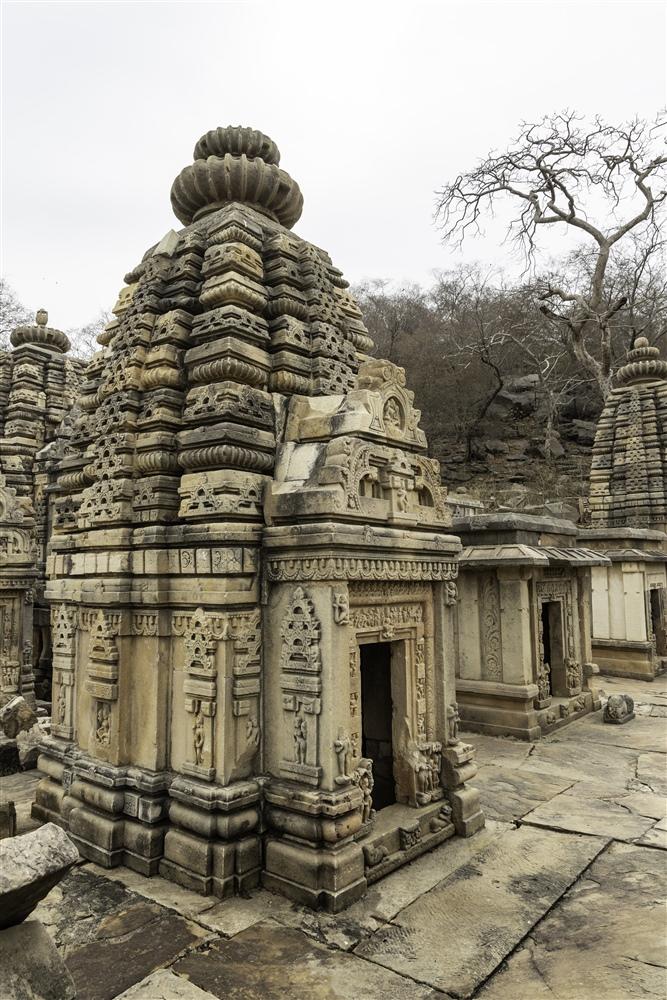
The significance of Bateshwar is deeply intertwined with the broader historical narrative of the Gujjar-Pratihara dynasty, which, as Suryavanshi descendants, sought to establish and perpetuate their connection to the legendary lineage of Laxman. As we explore the Bateshwar group of temples, we unravel a chapter in history where art, architecture, and religious devotion converged to create a lasting testament to the cultural vibrancy of Northern India during the 8th to 10th century under the Gujjar-Pratihara rule.
The earliest recorded reference to the Bateshwar group of temples is documented in the reports of Alexander Cunningham, who explored the region in 1881-1882. Cunningham’s observations shed light on an assemblage of temples numbering more than 100, predominantly small in size, situated to the southeast of Paravali (also known as Padavali). At that time those temples were completely in ruin condition, only the main temple of Lord Shiva Shrine known as Batesara or Bhuteshwar was standing alone in good condition.
In his accounts, Cunningham provided valuable insight into the historical and architectural significance of the Bateshwar temples. He noted the presence of a diverse array of structures, ranging in size, and highlighted their spatial relationship to the southeast of Paravali. Cunningham’s meticulous observations serve as a crucial historical record, offering a glimpse into the state of the Bateshwar temple complex during the late 19th century.
The reports by Alexander Cunningham contribute to our understanding of the temples’ existence and layout, forming an essential part of the historical documentation of these architectural marvels. This early reference by Cunningham serves as a foundational piece in the broader narrative of the Bateshwar group of temples, connecting us to the late 19th-century exploration of this historically and culturally significant site.
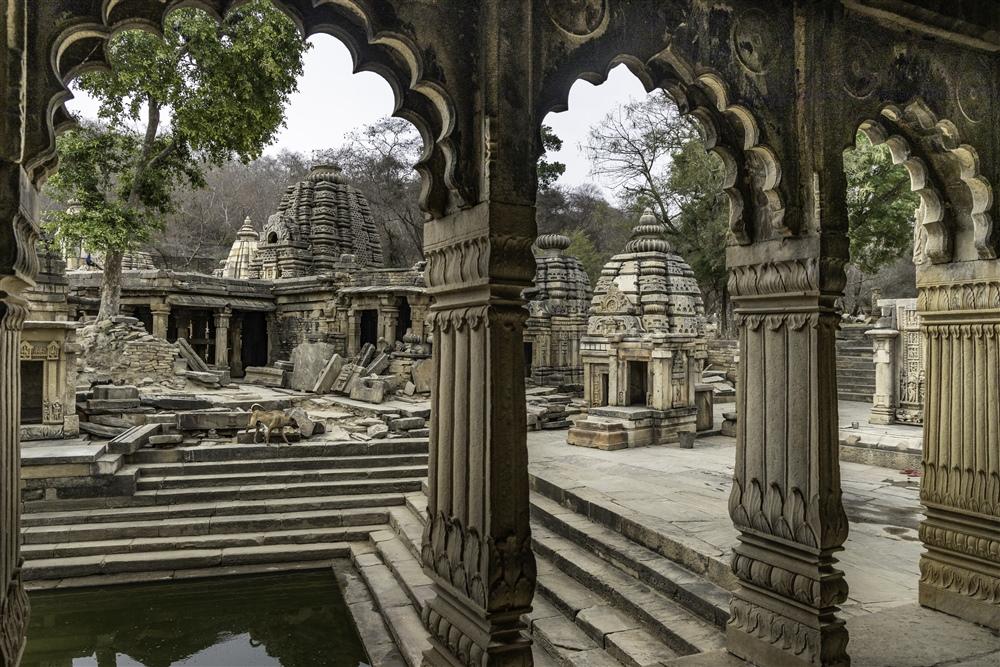
Subsequent references to the Bateshwar group of temples emerged in the scholarly works of Dr. Rahman Ali in 1987, as he delved into the intricate realm of Pratihara art forms in India. Dr. Ali’s focused exploration provided valuable insights into the cultural and artistic dimensions of the Bateshwar Temple complex, contributing to a deeper understanding of its historical context.
Furthermore, the monumental research efforts of R. D. Trivedi, specifically centered on the Pratihara Temples of central India, intricately wove the Bateshwar Temple complex into the broader tapestry of Pratihara architectural heritage. Trivedi’s comprehensive study, undertaken as a scholarly endeavor, underscored the significance of Bateshwar in the larger narrative of central Indian temples dating back to the Pratihara dynasty.
These later references, from Dr. Rahman Ali’s focused investigation to R. D. Trivedi’s extensive research, collectively augment the historical documentation of the Bateshwar group of temples. By integrating these scholarly perspectives, the temples become not just architectural relics but crucial components of the broader canvas of Pratihara’s artistic expression and historical exploration in Central India.
How The Temples Got Ruined?
The circumstances surrounding the destruction of the Bateshwar group of temples remain shrouded in mystery, with the cause attributed to either human activities or natural disasters still undetermined. A prevailing belief suggests that the temples may have succumbed to the seismic forces of a 13th-century earthquake. Despite the uncertainty surrounding their demise, the Archaeological Survey of India took a significant step in 1924 by declaring the site a protected area. This designation reflects the recognition of the historical and cultural importance of the Bateshwar Temple complex, emphasizing the need for preservation and safeguarding against further potential threats.
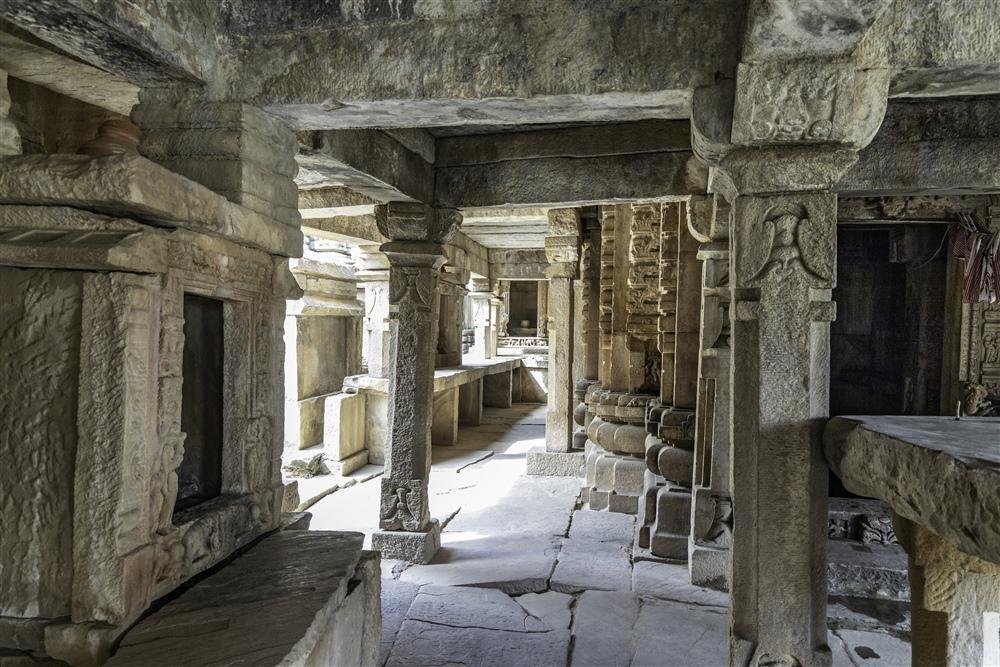
Restoration:
The restoration efforts commenced in 2005, spearheaded by Mr. KK Muhammad, a prominent archaeologist from Kerala who held a leading position in the Archaeological Survey of India (ASI). Among his notable achievements are the discovery of Akbar’s Ibadat Khana (Hall of Inter-Religious Discussions), the uncovering of a Christian chapel, and the revelation of a Mughal bazaar at Fatehpur Sikri. Mr. KK Muhammad played a pivotal role in the restoration endeavors, contributing significantly to the preservation and unveiling of historical landmarks.
During his tenure in the Bhopal region, Mr. KK Muhammad sought input from his staff regarding the most challenging restoration site. The unanimous recommendation led him to the Bateshwar temple complex. Upon reaching the location, he was taken aback by the sight of scattered ruined stones and broken temples, presenting a colossal puzzle to unravel. The formidable task of restoration was further complicated by the presence of dacoits in the area, adding a layer of challenge to the preservation efforts. Despite these hurdles, Mr. KK Muhammad undertook the daunting task with determination, aiming to revive the splendor of the Bateshwar temples.
In an attempt to secure support for the restoration, Mr. KK Muhammad approached that time influential dacoit, Mr. Nirbhay Singh Gujjar, highlighting the Gujjar lineage’s connection to the temples. Muhammad persuaded Gujjar to protect the ancestral heritage, portraying it as a duty befitting a responsible descendant. Somewhat convinced by Muhammad’s genuine intentions, the dacoit facilitated the protection of the site and ASI workers, ensuring no unauthorized access. This collaboration proved crucial in commencing the challenging task of restoring the Bateshwar temples.

Amidst the full-scale restoration efforts, the Indian police, determined to quell the reign of dacoits in the Chambal ravine, executed a plan to confront the notorious dacoit, Nirbhay Singh Gujjar. Approximately three months into the restoration project, when Gujjar visited the site, law enforcement seized the opportunity and fatally shot him. His death marked a turning point, bringing an end to the era of dacoit terror in the region from that fateful day forward.
Facing a new challenge, Mr. KK Muhammad tackled the issue of illegal sand mining threatening the Bateshwar temple complex’s conservation. Despite numerous pleas to the government, a breakthrough came when he sought the assistance of RSS chief KS Sudarshan. Their joint efforts led to the creation of a 750-meter buffer zone, enabling restoration to resume. Under Mr. Muhammad’s leadership, 60 temples were successfully restored, partially reviving the Bateshwar complex’s beauty. However, the persistence of scattered ruined stones in the field serves as a reminder of ongoing challenges in the conservation process.
Why Should We Visit Bateshwar Temple Complex?
Embarking on a visit to the Bateshwar Temple Complex offers a profound exploration of India’s historical and architectural legacy. Originating from the 8th to 10th century, this complex boasts around 200 ruined temples, representing the artistic prowess of the Gujjar-Pratihara dynasty. Nestled along the Chambal River, the site provides a fascinating journey into a bygone era, showcasing intricate details and unwavering devotion in its structures.
Moreover, the restoration initiatives led by Mr. KK Muhammad add a distinctive layer to the site’s narrative. The collaboration with dacoits, the battle against illegal sand mining, and the successful restoration of 60 temples exemplify the resilience and commitment required to preserve this cultural treasure. Visitors have the opportunity to witness a partial revival of the complex’s beauty while contemplating the ongoing challenges in conserving this historical marvel.
Interwoven with tales of heritage, culture, and a unique historical context, the Bateshwar Temple Complex beckons those with an appreciation for India’s rich past. It serves as a living testament to the continuous efforts dedicated to safeguarding and unraveling the architectural treasures that define the nation’s diverse and intricate history.
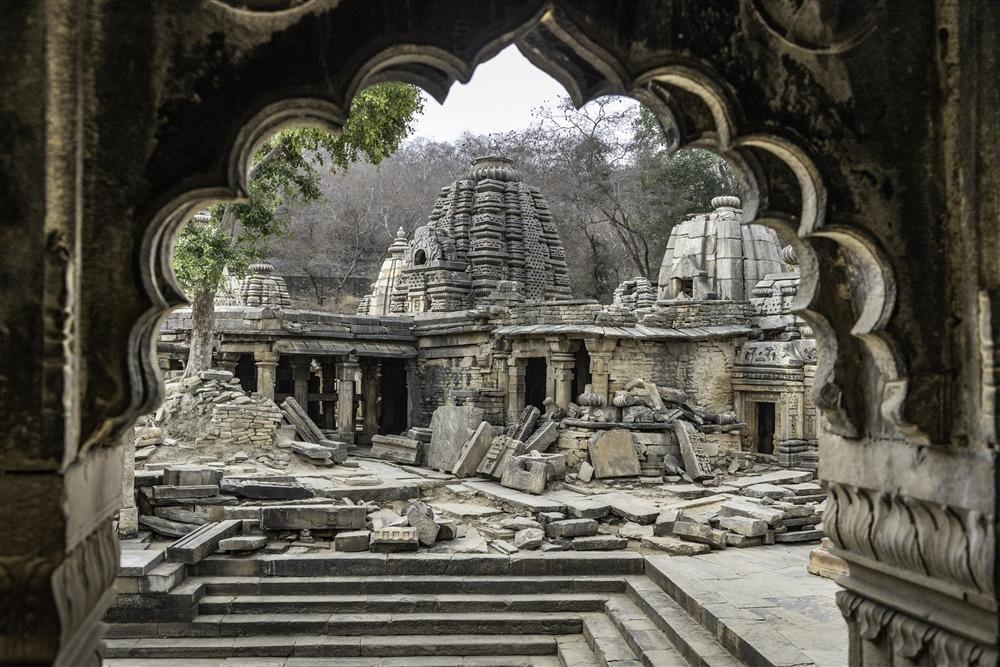
Best Time To Visit:
The best time to visit the Bateshwar Temple Complex is during the winter months, from October to March. During this period, the weather is relatively pleasant, with cool temperatures making it conducive for exploration. The winter season allows visitors to comfortably explore the outdoor archaeological site without the discomfort of extreme heat.
Moreover, this timeframe coincides with the Bateshwar Festival held in November, adding a unique cultural dimension to your visit. The festival celebrated with fervor, involves vibrant processions, traditional music, and cultural performances, providing an opportunity to witness the rich heritage associated with the Bateshwar temples. It’s advisable to check specific festival calendars or events for any additional highlights during your visit.
Avoiding the peak of summer (April to June) when temperatures can soar, and the monsoon season (July to September) with heavy rains is recommended to ensure a more enjoyable and comfortable visit to the Bateshwar Temple Complex.
How To Reach:
To reach the Bateshwar Temple Complex, various transportation options are available, depending on your starting location.
By Air: The nearest airport is Gwalior Airport, situated approximately 80 km away. Upon arrival at the airport, you can opt for local transportation like taxis to reach the temple complex.
By Train: The closest railway station is Morena, approximately 25 km away. Morena enjoys good rail connectivity with major cities in India. After reaching the railway station, taxis or local transport can be hired to reach Bateshwar.
By Road: Bateshwar is well-connected by road, with regular bus services and private taxis operating from nearby towns and cities. The temple complex can be reached via the National Highway network, making it convenient for those choosing to travel by road.
For shorter distances within the vicinity of the Bateshwar Temple Complex, local transportation options such as auto-rickshaws and cycle rickshaws are available. It is recommended to plan your transportation based on your starting location and preferences for a comfortable and efficient journey.

Where To Stay:
When seeking accommodation for your visit to the Bateshwar Temple Complex, you have a diverse range of options tailored to different preferences and budgets.
1. Riverside Retreats: Consider exploring charming guesthouses along the riverbanks near Bateshwar for a tranquil and scenic stay. These accommodations offer a unique blend of comfort and a close connection with the natural beauty surrounding the temple complex.
2. Heritage Inns in Morena: Opting for heritage inns in Morena provides not only a comfortable stay but also a cultural experience. Immerse yourself in the local ambiance while being close to the Bateshwar temples.
3. Gwalior’s Boutique Stays: For those seeking a touch of luxury, Gwalior, located around 80 km away, offers boutique hotels with distinctive character and top-notch amenities. Enjoy a unique and stylish stay while exploring the rich history of the region.
Remember to explore local guesthouses or lodges near the Bateshwar Temple Complex itself, providing an opportunity for an authentic and immersive experience. Tailor your stay to match your preferences, ensuring a memorable and one-of-a-kind visit to Bateshwar.
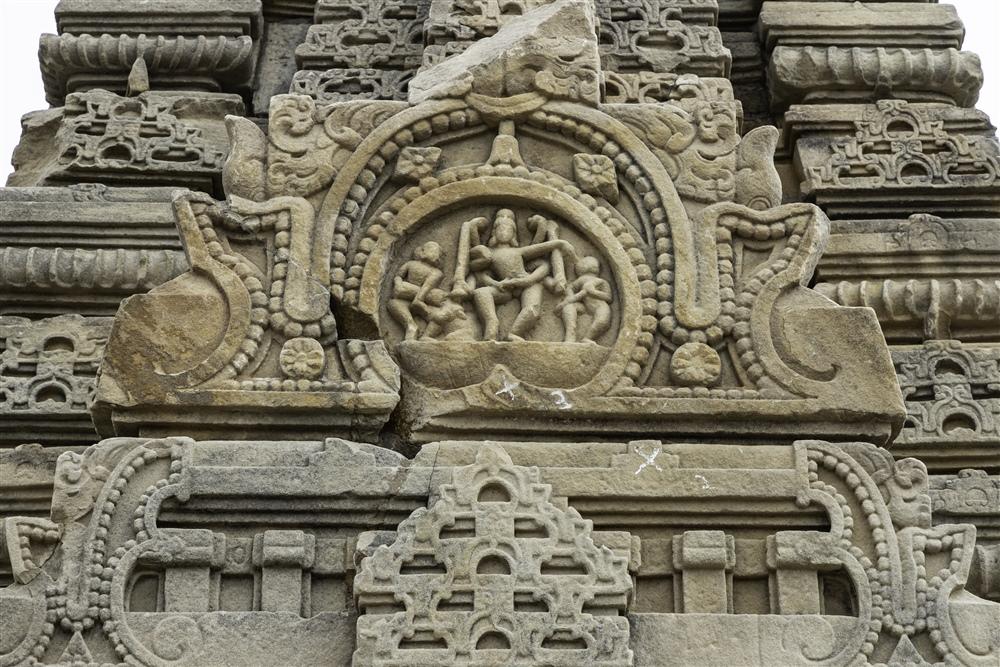
Conclusion:
In summary, the Bateshwar Temple Complex, with its ancient roots, restoration efforts, and ongoing challenges, stands as a captivating testament to India’s rich heritage. Partially restored, it beckons visitors to delve into its history and witness the commitment to preserving this architectural gem.
FAQs:
- What is the historical significance of the Bateshwar Temple Complex?
- The Bateshwar Temple Complex dates back to the 8th to 10th century and is associated with the Gujjar-Pratihara dynasty, showcasing India’s historical and architectural heritage.
2. Who led the restoration efforts at Bateshwar, and when did they take place?
- Mr. KK Muhammad spearheaded the restoration efforts, starting in 2005, overcoming challenges like collaboration with dacoits and countering illegal sand mining.
3. When is the best time to visit Bateshwar Temple Complex?
- The ideal time to visit is during the winter months (October to March) when the weather is pleasant, and various festivals, including the Bateshwar Festival in November, add cultural richness.
4. How can one reach the Bateshwar Temple Complex?
- The nearest airport is Gwalior, the closest railway station is Morena, and the site is well-connected by road. Local transportation options are available for shorter distances.
5. Where can visitors stay during their visit to Bateshwar?
- Accommodation options include riverside retreats for a scenic experience, heritage inns in Morena for a cultural touch, and boutique stays in Gwalior for those seeking luxury.
6. Is there an entry fee to Bateshwar Temple Complex?
- Entry fees, if any, may vary and are subject to change. It’s advisable to check with local authorities or guides for the latest information.
Check out my recent blog: Mysterious skeleton Lake Of India.

A girl who loves to travel and always craving food. Let’s explore some good places and eateries together.
